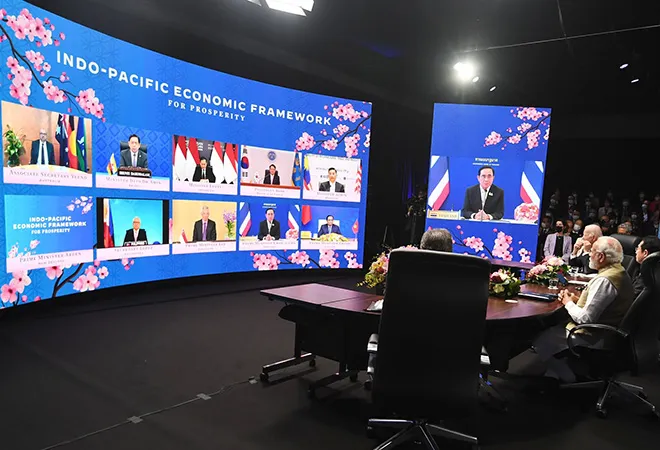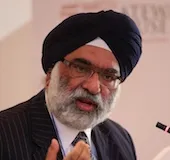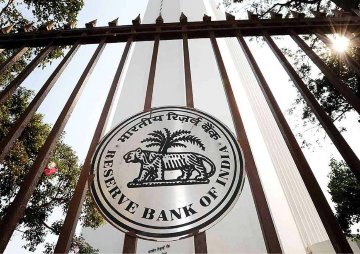
An important by-product of the fourth Quad Summit in Tokyo on 24 May, was the Indo Pacific Economic Framework (IPEF) announced a day earlier. This is an associated framework of the Quad that will open the region to other countries.
The IPEF goes beyond the original Quad intent. It develops the recent Quad initiatives for larger functional rather than security-led efforts in the Indo-Pacific.
It has been witnessed that the recent Quad summits were attempting to woo ASEAN. In every joint communique, a trumpeting of ASEAN centrality and unity and its importance to the Indo-Pacific is enunciated. The separation of the security dimensions was geared to provide comfort to ASEAN. ASEAN prefers to avoid China versus the United States (US) paradigm, viewing the Quad within that fold.
The IPEF managed to attract13 adherents. Seven of the 10 ASEAN countries agreed to join the consultations. The four Quad countries, India, the US, Japan, and Australia are naturally a part of this, followed by New Zealand and South Korea. All 13 are East Asia Summit members and except for India and the US, all are in the Regional Comprehensive Economic Partnership (RCEP) as well.
It is an incomplete document and plan. Biden had mentioned IPEF briefly to the ASEAN leaders, when eight of them attended the US–ASEAN special summit in May 2022, but did not launch it there.
This is an interesting Quad-plus initiative. In strategic terms, yet another regional economic grouping emerges, with countries being co-members in other groupings.
The IPEF is unique, but it is yet a consultative process and not an economic institution. Biden had announced the idea of IPEF at the EAS Summit in October 2021. For the US, the IPEF is a part of its pivot to Asia and its new Indo-Pacific strategy. However, it is an incomplete document and plan. Biden had mentioned IPEF briefly to the ASEAN leaders, when eight of them attended the US–ASEAN special summit in May 2022, but did not launch it there. The three least developed ASEAN members, Cambodia, Laos, and Myanmar are not invited to the IPEF.
Japan is a strong pillar in the IPEF. It shaped the initiative, with substantial ideas and helped in persuading ASEAN countries. The agenda of IPEF extends issues that the US and Japan already work on such as infrastructure and supply chains. They can address the vulnerabilities in the semiconductor supply chain, providing raw materials and the technical equipment used for production. Japan prefers ‘sustainable and inclusive economic growth in the region.
Including Korea and New Zealand is important since they are amongst the democratic phalanx of countries in the Indo-Pacific, members of CPTPP and RCEP, and need to be included for wider consultations. The welcome decision of Fiji to join the IPEF widens the scope by including the Pacific. However, Taiwan which is an APEC member and like China has applied to the CPTPP was not invited to join the IPEF. As much as the US would like it there, many of the other countries would be wary of such a move as it will vex China.
Aspects of IPEF:
The US sees the IPEF as expanding the US economic leadership in the Indo-Pacific, benefitting the US economy. The IPEF is expected to decide on high standard rules for competition, rather than domination by any particular country. The focus on resilient supply chains is an effort to protect the region from disruptions and inflationary pressures.
The agenda of IPEF extends issues that the US and Japan already work on such as infrastructure and supply chains.
The IPEF does not include market access offers, as trade agreements require Congressional approval that the Biden administration is unwilling to risk.
The US thinks that earlier models of economic engagement did not address the challenges of fragile supply chains, corruption, and tax evasion. The IPEF proposes a frame that will ‘benefit labour, entrepreneurs, and consumers’.
The IPEF proposes to focus on four main pillars for enhanced economic engagement. For economic connectivity, a review of trade with a higher quality of rules for the digital economy; standards for data flows and data localisation; grasping opportunities in the digital economy and support SMEs in the E-commerce sector, whilst protecting them from online disruption to unethical use of AI are amongst the prime targets. Stronger labour, environmental standards, and corporate accountability are a few of the American objectives that are set for IPEF.
The second pillar is economic resilience, focusing primarily on supply chains that are less prone to disruption and price fluctuations. The establishment of an early warning system, determining critical minerals, and supplies and coordinating diversification in sectors like EVs and semiconductors is amongst the goals. Over the long term, the IPEF sees pooling capabilities, building a resilient supply in critical technologies, which can operate smoothly even during crises. The India–EU and US–EU Trade and Technology Councils can provide relevant information sharing through such platforms. These could be adapted to the IPEF ‘to tackle challenges at the nexus of trade, trusted technology, and security’,
The third pillar, i.e., the clean economy seeks commitment to renewable energy, decarbonisation, and green infrastructure which will contribute to economic growth. It aims to deal with new investments in green energy, achieve higher efficiency standards, and to control methane emissions.
The fourth pillar is the just economy which seeks an egalitarian system. It proposes effective anti-money laundering, anti-corruption, and tax evasion ideas. It proposes a better exchange of tax information, criminalisation of corruption in accordance with UN standards and beneficial ownership recommendations to button up corruption avenues.
The Quad commitment to leverage funds of US$50 billion for quality infrastructure in the region can reduce the infrastructure gap through this and the Build Back Better World (BW3) with G7. The Japan–Australia–US Infrastructure initiative, the Japan–EU, and India–EU connectivity partnerships can be leveraged for closer aggregation rather than repetition.
The establishment of an early warning system, determining critical minerals, and supplies and coordinating diversification in sectors like EVs and semiconductors is amongst the goals.
If the US seeks a high-standard framework, then it won’t get far since partners want market access too. The IPEF partners will not concur only with US preferences. The US can concur with the WTO Trade Facilitation Agreement and stop blocking the dispute resolution mechanism in the WTO.
India and the IPEF
India took tentative steps to join the IPEF. On 21 May, the MEA spokesman said that this was a US initiative, and India was examining it. On 23 May, PM Modi was amongst the three Quad leaders present when the IPEF was announced.
As pointed out in a paper by Prabir De, there are several substantive issues where India differs from the US position. High standards are always a problem for India, thus, India never looked at the TPP seriously. Digital governance is perhaps contradictory to India's current positions on this. Restrictions on international data flows, the requirements of data localisation particularly for the financial services sector, and the customs duties on electronically distributed digital products have contradictions between India and the US positions. Often the US federal and state laws contradict rules preferred by India. Many differeces exist between India and developed countries, especially when it comes to labour standards, subsidies across borders, particularly for public sector entities, and the role of such entities. The IPEF is a mix of developed and developing countries. Such contradictions will not easily go away.
Restrictions on international data flows, the requirements of data localisation particularly for the financial services sector, and the customs duties on electronically distributed digital products have contradictions between India and the US positions.
Why did India sign on to the IPEF? Much like the strategic reasoning that India joined the RCEP in 2012. At the Quad summit, if India kept away from the IPEF, it would again be isolating itself in the face of an overwhelming support in the region for the IPEF. It made no sense to remain at the fringes since the government invested so much to move on trade and climate issues to make India a constructive partner. In that spirit India joined the IPEF. It is for the first time that India actually signed on to an economic multilateral arrangement in the Indo-Pacific and showed a positive outlook. Now, it will be up to the negotiators to work out important gains for India.
China, sees IPEF as a part of the US intent to decouple from the Chinese economy. China also views it as an effort to undermine the unity of ASEAN and include them in the US Indo-Pacific strategy. China believes that the IPEF will not be able to decouple the ASEAN countries because of the overwhelming nature of China’s economic engagement with them.
The US preference is to energise the IPEF into a credible framework for its economic engagement with the Indo-Pacific. The IPEF is optimistic, but will require to be well-managed if it is to enhance US economic and strategic interests. It must become a mutually beneficial and credible alternative or support to other regional initiatives, and be perceived by allies and partners as a viable commitment to the region. The US has woven a tangled web for its own reasons and partners can hardly afford to unravel it nor get stuck in it.
The views expressed above belong to the author(s). ORF research and analyses now available on Telegram! Click here to access our curated content — blogs, longforms and interviews.




 PREV
PREV


